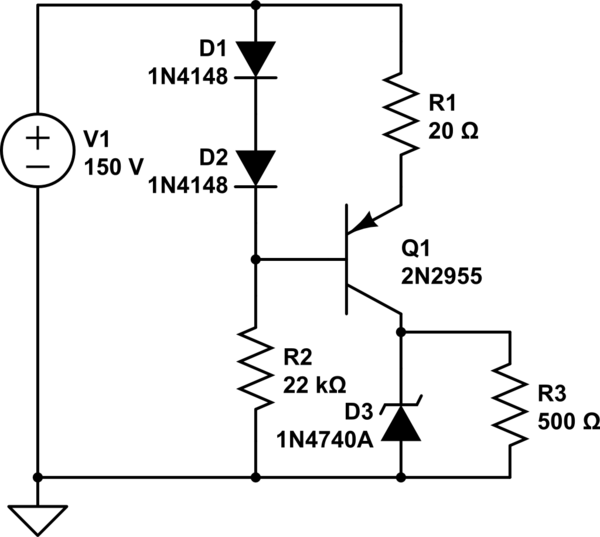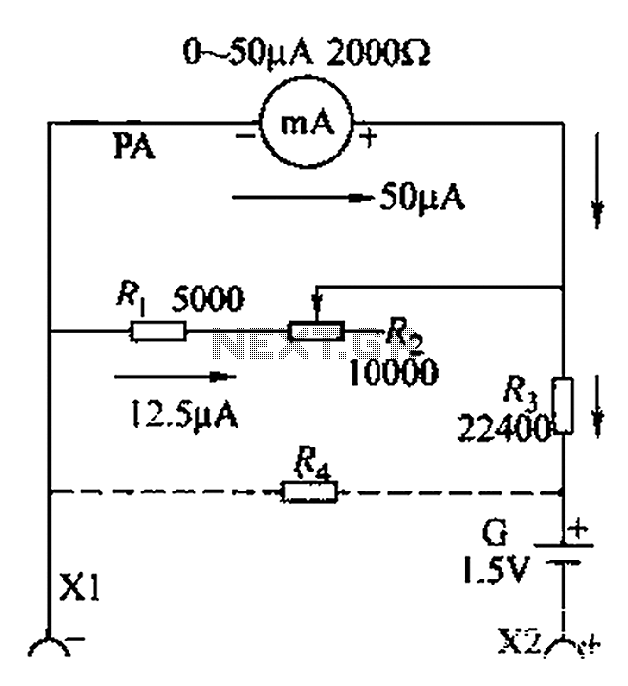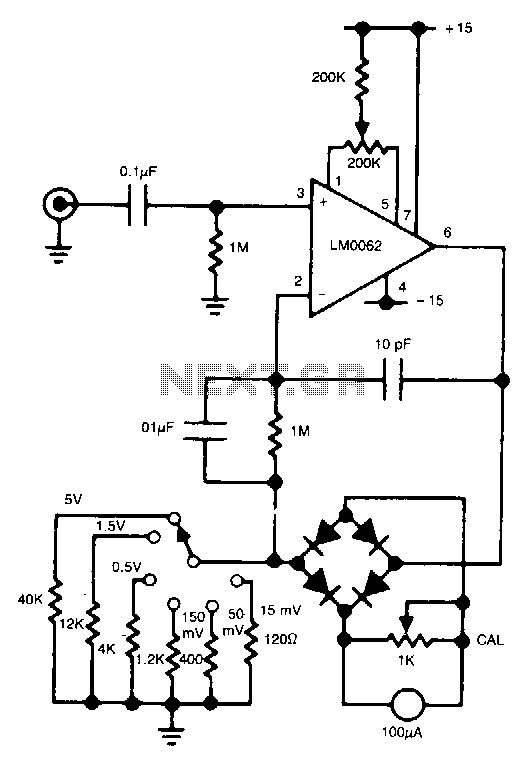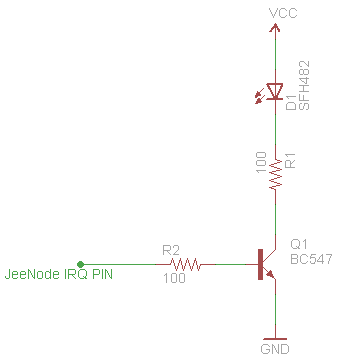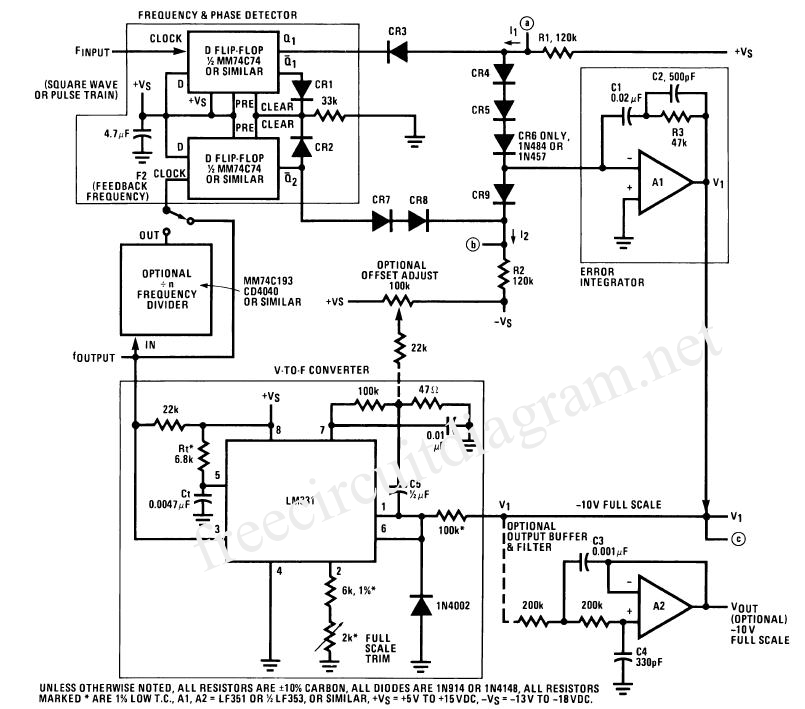
Ammeter with six decade range II
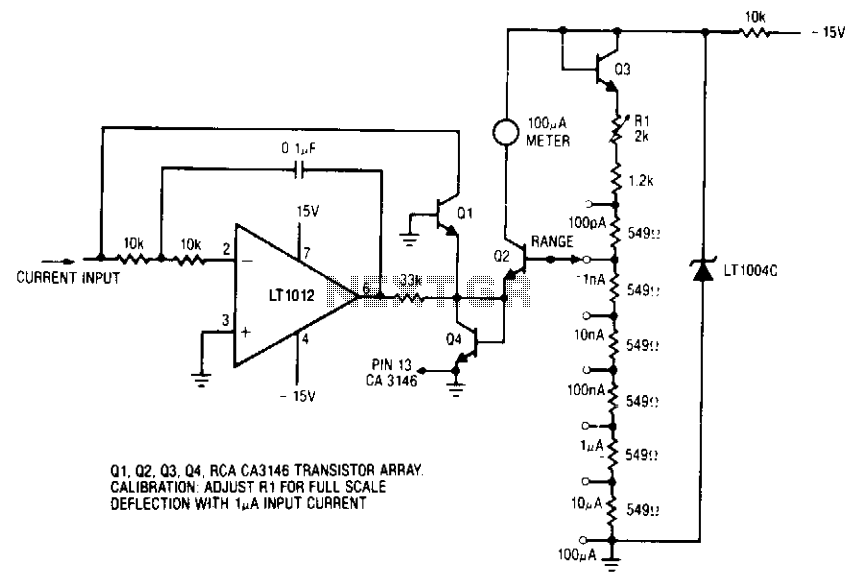
The ammeter measures currents from 100 pA to 100 µA without the use of expensive high-value resistors. Accuracy at 100 µA is limited by the offset voltage between Q1 and Q2, and at 100 pA, it is limited by the inverting bias current of the LT1008.
The ammeter described operates within a current range of 100 picoamperes (pA) to 100 microamperes (µA), making it suitable for applications requiring precise low-current measurements. The absence of high-value resistors in the design not only reduces costs but also minimizes additional noise and power consumption, which is critical when measuring such low currents.
The accuracy of the ammeter at the upper limit of 100 µA is primarily constrained by the offset voltage between the two transistors, Q1 and Q2. This offset voltage can introduce errors in the current measurement, necessitating careful selection and matching of these components to ensure high accuracy. The influence of temperature and manufacturing variances on the offset voltage must also be considered during the design phase.
At the lower limit of 100 pA, the performance is affected by the inverting bias current of the LT1008 operational amplifier. This bias current can contribute to measurement errors, especially in low-current scenarios where even minute variations can significantly impact the reading. To mitigate this effect, the circuit design should include strategies such as using low-bias current operational amplifiers or employing techniques to minimize the impact of bias currents on the measurement.
In summary, the ammeter effectively measures a wide range of currents while maintaining cost efficiency by avoiding high-value resistors. However, it is crucial to address the limitations imposed by the offset voltage of the transistors and the bias current of the operational amplifier to achieve optimal accuracy across the specified current range.The Ammeter measures currents from 100 pA to 100 µ without the use of expensive high value resistors. Accuracy at 100 µ is limited by the offset voltage between Ql and Q2 and, at 100 pA, by the inverting bias current of the LT1008.
The ammeter described operates within a current range of 100 picoamperes (pA) to 100 microamperes (µA), making it suitable for applications requiring precise low-current measurements. The absence of high-value resistors in the design not only reduces costs but also minimizes additional noise and power consumption, which is critical when measuring such low currents.
The accuracy of the ammeter at the upper limit of 100 µA is primarily constrained by the offset voltage between the two transistors, Q1 and Q2. This offset voltage can introduce errors in the current measurement, necessitating careful selection and matching of these components to ensure high accuracy. The influence of temperature and manufacturing variances on the offset voltage must also be considered during the design phase.
At the lower limit of 100 pA, the performance is affected by the inverting bias current of the LT1008 operational amplifier. This bias current can contribute to measurement errors, especially in low-current scenarios where even minute variations can significantly impact the reading. To mitigate this effect, the circuit design should include strategies such as using low-bias current operational amplifiers or employing techniques to minimize the impact of bias currents on the measurement.
In summary, the ammeter effectively measures a wide range of currents while maintaining cost efficiency by avoiding high-value resistors. However, it is crucial to address the limitations imposed by the offset voltage of the transistors and the bias current of the operational amplifier to achieve optimal accuracy across the specified current range.The Ammeter measures currents from 100 pA to 100 µ without the use of expensive high value resistors. Accuracy at 100 µ is limited by the offset voltage between Ql and Q2 and, at 100 pA, by the inverting bias current of the LT1008.
